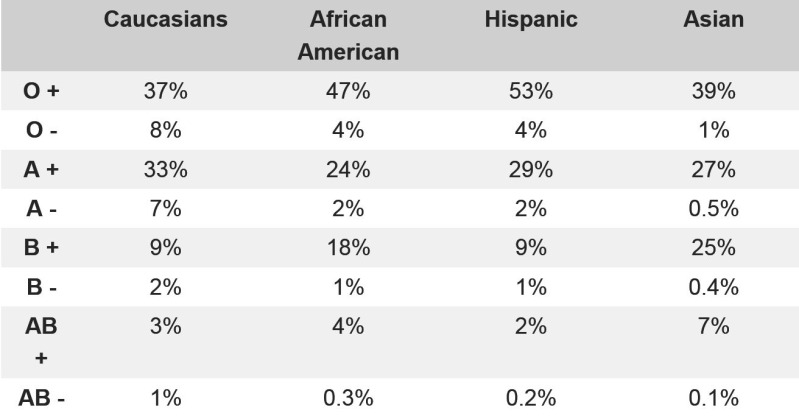

Neonatal isoerythrolysis has been reported in DEA 1 negative female dogs (previously sensitized to DEA 1 positive cells) mated to DEA 1.1 positive male dogs. Therefore, crossmatching in dogs does not need to be done on the first transfusion.

Rather, transfusion of incompatible blood is hemolysed more rapidly (within 4 to 5 days) than compatible blood would be (so-called delayed hemolytic reaction). Although DEA 3-, 5- and 7-negative dogs do have naturally occurring antibodies to DEA 3, 5 and 7 positive red cells, these blood groups do not incite severe hemolytic reactions. In an acute hemolytic transfusion reaction, the lifespan of incompatible transfused erythrocytes ranges from minutes to 12 hours. The normal lifespan of compatible transfused erythrocytes in dogs is approximately 21 days. As these dogs do not have naturally occurring antibodies, a reaction will only be seen after sensitization of the dog through exposure to DEA 1.1 or 1.2 positive blood (antibody production takes 7-10 days after exposure). New blood groups in dogs are being detected, including those in Dalmations, Doberman Pinschers and Shih Tzus, amongst other breeds) (Dal) ( Blias et al 2007, Goulet et al 2017) and Kai-1 (IgM) and 2 (IgG) ( Euler et al 2016).Īcute hemolytic transfusion reactions only occur in DEA 1.1 and 1.2 negative dogs. Naturally occurring antibodies occur in 20% of DEA 3-negative, 10% of DEA 5-negative, and 20-50% of DEA 7-negative dogs. Dogs can be positive for either (not both) DEA 1.1 or 1.2 or are negative for both. The major antigens are DEA 1.1 and DEA 1.2. These are illustrated in the table below. There are 8 major blood groups in the dog, labeled as DEA (dog erythrocyte antigen) 1 to 8. Since administration of typed negative blood will not prevent a transfusion reaction to less well-characterized red cell antigens, crossmatching should always be performed in an individual that has been previously exposed to blood group antigens. Blood type compatibility (or incompatibility) is determined in the laboratory using crossmatching procedures. Ideally, any animal that is routinely used as a blood donor should be blood typed for the most common antigens that produce a hemolytic reaction and (ideally) should be negative for these antigens. the Comparative Coagulation Laboratory of the Animal Health Diagnostic Center at Cornell University, the Equine Blood Testing Laboratory in Kentucky, the Stormont Laboratory in California). induce a hemolytic reaction) can cause agglutination and/or hemolysis of red cells.īlood typing (for the most common blood groups) is offered by a few specialized veterinary diagnostic laboratories (e.g. The most common route of exposure is from previous blood transfusions, however there are less obvious sources of exposure, such as vaccinations that contain foreign red blood cell antigens.

Acquired antibodies are produced after exposure to an incompatible blood type, which is from exposure to blood or products containing erythrocytes or their antigens. some will not produce a transfusion reaction. Naturally occurring antibodies occur in most species and vary in their pathological significance, i.e. There are two types of antibodies to blood group antigens naturally occurring antibodies and antibodies acquired after exposure to the blood group antigen. Knowledge of blood types in the different species is important as transfusion of incompatible blood (the donor animal has a different blood type from the recipient animal) can result in severe hemolytic transfusion reactions and even death, in some instances. In humans, there is the ABO system of blood types, whereas animals have a variety of different blood types. These diet measures are known to benefit anyone’s health, regardless of blood type.Blood types (or groups) are determined by specific antigens found on the surface of erythrocytes. Like many other food plans, this plan stresses avoidance of: However, there’s no evidence the theory underlying this diet caused these results. Weight loss and lowered cholesterol have been reported by people who have tried this diet. His diet plan promises:Īs with any diet, people may try this plan in order to lose weight or for other health benefits. D’Adamo believes people with this blood type have less-than-robust immune systems and are prone to anxiety. The A-positive blood type diet is primarily vegetarian. He theorizes this is why people with this blood type can readily digest vegetables and carbohydrates, but have a difficult time digesting animal protein and fat. D’Adamo, the A-positive blood type became prevalent during the early years of the agricultural age.


 0 kommentar(er)
0 kommentar(er)
